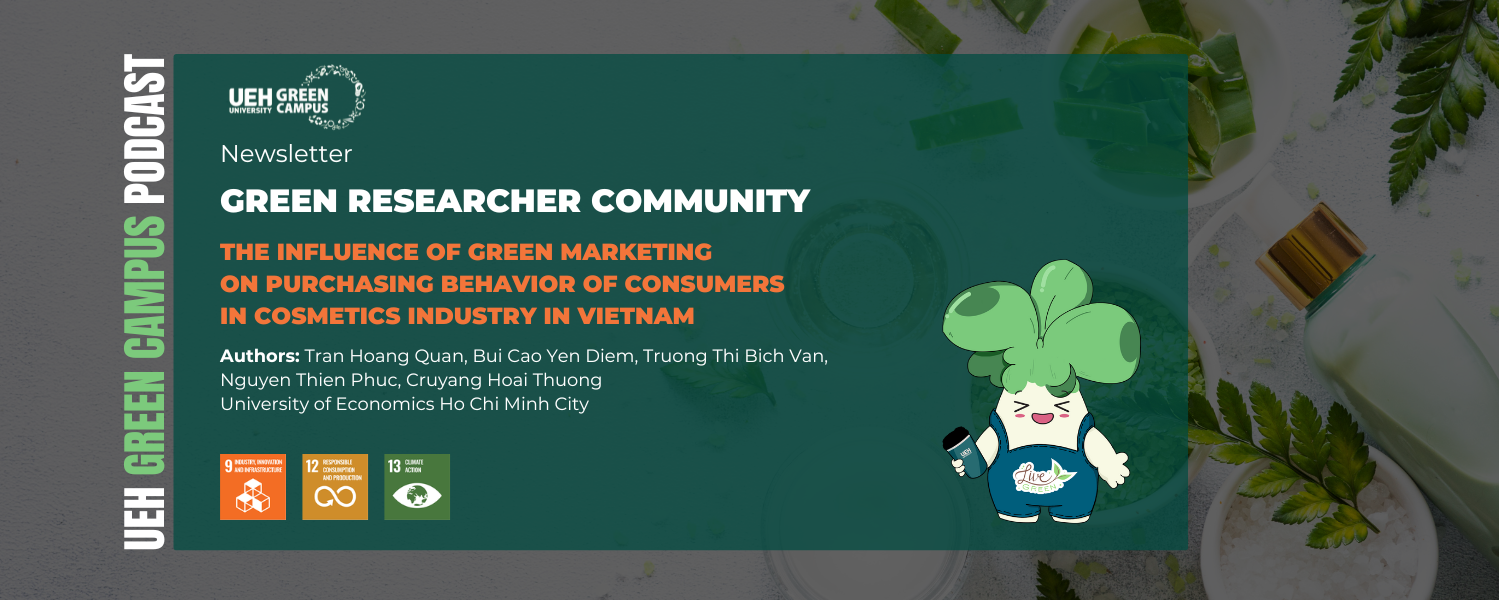Keywords: green marketing, consumer behavior, cosmetics industry
"Green marketing" is emerging as a global trend, particularly in the cosmetics industry - a sector closely linked to the need for beauty and sustainable lifestyles. The application of green marketing has a positive impact on the exchange, buying and selling processes, and customer retention rates of businesses in Vietnam. Based on this practice, the research topic "The Impact of Green Marketing on Consumer Purchasing Behavior in the Cosmetics Industry in Vietnam," conducted by a group of students from the University of Economics Ho Chi Minh City (UEH), clarified the relationship between green marketing factors, brand trust – love – loyalty, and customer purchasing behavior.

The link between green marketing and brand factors and shopping behavior
Green marketing is the marketing of products and services that meet current consumer needs while ensuring future generations are protected, integrating environmental factors throughout the process. For the strategy to be implemented effectively, businesses need to clearly understand the important role of factors such as trust, love, and customer loyalty, which have a certain influence on consumer purchasing decisions.
*From faith, love, and loyalty...
When businesses fulfilll their environmental commitments in product promotion and supply, they not only build a positive image but also establish brand trust. This trust becomes the foundation for emotional connection, making customers less price-sensitive and more likely to stay loyal for longer.
A "fully developed" relationship offers dual benefits: businesses can easily understand consumer habits, emotions, and behaviors to improve satisfaction, while customers gradually develop brand love and loyalty. Thanks to this, even in a competitive market or with fluctuating prices, they continue to support the product and become a bridge for spreading brand value to the community.
*Up to customer behavior and spending decisions
Purchasing behavior directly reflects personal desires, as demonstrated thru the preparation process, attitudes, and decisions regarding product selection. Over time, consumer trends have shifted toward responsible consumption, forming the group of "green consumers" – a potential segment for businesses with a demand for environmentally friendly products and services.
In green marketing strategies, businesses need to focus on truly sustainable products, adhere to the entire production-distribution-consumption-disposal process, and emphasize ethical purchasing. This customer group wants to meet their personal needs while minimizing negative environmental impact.
Especially in the cosmetics industry, brand loyalty has a strong impact on purchasing behavior. As Vietnamese people's awareness of health and the environment grows, so does the demand for "green quality" both inside and outside products, making customer loyalty a key to sustainable competitive advantage for businesses.
The interplay of factors leading to sustainable action
Thru the mediating factors of brand trust, love, and loyalty, green marketing strategies positively impact purchasing behavior in the Vietnamese cosmetics industry.
Trust is the foundation: when businesses implement transparent and consistent green marketing, customers build trust, form emotional connections, and develop brand loyalty. From then on, they prioritize product selection, are willing to pay higher prices, and voluntarily share positive experiences.
Based on this, loyalty is fostered, ensuring both stable revenue and turning customers into natural "spokespeople" who spread green values. This chain of impacts promotes sustainable consumer behavior – choosing products based on environmental criteria and a sense of social responsibility.
In the cosmetics industry, where "green" is reflected from ingredients to packaging, sustainable consumer behavior both reflects changing needs and opens up long-term competitive advantages for brands that know how to harmoniously combine economic value and environmental responsibility.
Opening the door for the cosmetics industry in the green era?
To enhance the effectiveness of green marketing strategies, Vietnamese cosmetic businesses need to implement a range of solutions simultaneously. First and foremost, the product must be truly green – from ingredients and origin to recycled packaging – rather than just being labeled as such. At the same time, "greenwashing" should be avoided by transparent communication and building a trustworthy image in the eyes of customers.
Businesses should also collaborate with and educate consumers about green values, such as natural ingredients, eco-friendly packaging, and how to distinguish genuine from counterfeit products. When customers clearly understand the benefits, they will be more engaged and feel like they are contributing to positive change.
Additionally, post-purchase experience care, such as loyalty points, green-themed gifts, or community events, will help retain customers and turn them into "brand ambassadors".
Finally, a strategy is only sustainable when it is continuously monitored and improved. Businesses need to measure satisfaction levels, return rates, sales of green products, and listen to feedback to make adjustments and maintain long-term effectiveness.
The research paper has indirectly contributed to SDGs 9, 12, and 13. See the full topic "The Impact of Green Marketing on Consumer Buying Behavior in the Cosmetics Industry in Vietnam" HERE.
Authors: Tran Hoang Quan, Bui Cao Yen Diem, Trương Thi Bich Van, Nguyen Thien Phuc, Cruyang Hoai Thuong - University of Economics Ho Chi Minh City.
This article is part of the Green Research Community series with the message "Research Contribution for UEH Living Lab Green Campus" UEH sincerely invites the community to follow the next Green Research Community newsletter.
*To create maximum conditions for the development of the "UEH Green Researcher Community," members of the community will be able to attend scientific research methods classes related to the topics of Living Lab and Green Campus. Additionally, upon meeting the standards, the research team will receive a certificate from the UEH Sustainable University Project Board and financial support for a standard-compliant project.
More information:
SDG 9 – Industry, Innovation, and Infrastructure aims to build resilient infrastructure, promote sustainable industrialization, and encourage innovation. This goal goes beyond advancing technology and production; it also includes narrowing infrastructure access gaps between regions, supporting small and medium-sized enterprises, and applying technology to enhance global competitiveness.
SDG 12 – Responsible Consumption and Production focuses on ensuring sustainable production and consumption patterns, thereby reducing pressure on natural resources, minimizing waste, and limiting environmental pollution. This goal emphasizes the importance of effective waste management, optimal use of resources, and promoting changes in consumer behavior at both individual and community levels, particularly through education and awareness.
SDG 13 – Climate Action calls for urgent measures to combat climate change and its adverse impacts by reducing greenhouse gas emissions, enhancing adaptive capacity, and raising public awareness. This goal goes beyond national-level policies and requires changes in individual and community behaviors in daily life, especially in areas directly linked to waste generation and management.
News, photos: UEH Green Campus Project, UEH Youth Union - Student Association, UEH Communications and Partnership Development Department
Voiceover: Tam Dan







